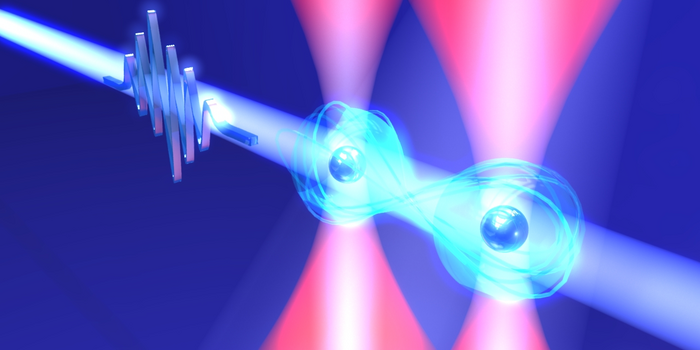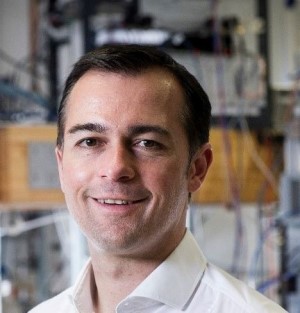Researchers have developed new quantum computing hardware that dramatically improves on the quantum gate speeds of prior technologies.
Earlier this year, researchers from the National Institutes of Natural Sciences’ Institute for Molecular Science in Okazaki, Japan announced in Nature Photonics their execution of what they say is the world's fastest two-qubit gate, which operates in just 6.5 nanoseconds.
This was achieved using a new method in which an ultrafast picosecond laser was used to manipulate rubidium atoms cooled to almost absolute zero.
The previous record, 15 nanoseconds, was achieved by Google AI in 2020 using superconducting circuits. According to the researchers, the work represents a breakthrough in the form of new cold-atom quantum computer hardware that breaks through the limitations of other superconducting and trapped-ion formats currently under development.
Quantum gates explained
For the past two decades, quantum computer hardware innovation has been chasing faster gates: the basic arithmetic elements that make up quantum computing. These gates correspond to the logic gates such as AND and OR used in conventional classical computers.
There are one-qubit gates that manipulate the state of a single qubit, and two-qubit gates that generate quantum entanglement between two qubits. The latter is the source of the high-speed performance of quantum computers.

Conceptual diagram of the world’s fastest two-qubit gate. Two atoms captured in optical tweezers (red light) with a separation of a micrometre are manipulated by an ultrafast laser pulse (blue light) shone for only 10 picoseconds. (Image: Dr Takafumi Tomita)
The accuracy (fidelity) of a quantum gate can easily be degraded by noise from the external environment and the operating laser, which is one of the many factors making the development of quantum computers so challenging. This is why researchers around the world are striving after faster gates – to escape the effects of external noise.
Outpacing noise
In the researchers' new method, two rubidium atoms in the gas phase are cooled to an ultra-low temperature of about 1/100,000 of a Kelvin using laser beams, and then arranged at a micron interval via optical tweezers – a laser beam tightly focused to a size of less than a micron, towards which atoms are attracted and trapped. The atoms are then irradiated with ultrashort laser pulses of only 10 picoseconds in duration.
This knocks two electrons trapped respectively in the smallest orbitals of the two adjacent atoms, into giant electronic orbitals – turning them into what’s known as Rydberg atoms. The interaction between these giant atoms then leads to a periodic back and forth exchange of the orbital shape and electron energy, occurring with a period of 6.5 nanoseconds. After one oscillation, the laws of quantum physics dictate that the sign of the wavefunction is flipped, thus realising the two-qubit gate.
According to the researchers, since the time scale of external noise is generally slower than one microsecond, the new, ultrafast quantum gate is able to avoid the degradation of calculation accuracy due to noise, which they say brings the world much closer to realising a practical cold-atom quantum computer.
Cold-atom based quantum computers have been rapidly attracting attention from industry, academia, and governments around the world in recent years, as revolutionary hardware that breaks through some of the limitations of superconducting and trapped-ion quantum computers – currently the most advanced types of quantum computers.
“The ultrafast quantum gates of 6.5 nanoseconds, achieved using cold-atom hardware, are more than two orders of magnitude faster than the noise and thus can ignore its effects,” confirmed the researchers in their announcement of the work. “The cold-atom quantum computer has revolutionary potential in that it can be easily scaled up to larger scale while maintaining high coherence compared to superconducting and trapped-ion quantum computers. This realisation of the world's fastest ultrafast gate, achieved using a completely new method of manipulating two artificial crystals of micron-spaced atoms cooled to almost absolute zero using an ultrafast laser, is expected to greatly accelerate worldwide attention to cold-atom hardware.”
A second opinion
Electro Optics approached Martin Weides, Professor of Quantum Technologies at the University of Glasgow, to find out whether the announcement was indeed as significant as the researchers made it out to be.
He began by remarking on the progress that has been made in the field of cold-atom quantum computers in recent years: “Every cold-atom computer uses lasers to both trap (optical tweezers) and cool atoms to micro-Kelvin temperatures, which all takes place in vacuum (the powerful lasers are positioned outside the vacuum on an optical table). The laser stability is therefore key, and it is this that has really come along in recent years. And so now there is an increasing global effort to build quantum computers based on cold atoms.“
However, according to Weides, the weakness of such quantum computers has so far been the time it takes to implement a quantum gate, which has traditionally been much longer than the typical gate times achieved on superconducting platforms – such as the aforementioned system developed by Google AI.

Martin Weides, Professor of Quantum Technologies at the University of Glasgow, remarked on the new development.
“But now with this work, they have achieved even shorter gate times, meaning the quantum algorithm can be operated as fast as on the other platforms,” he remarked. “In the field of cold-atom quantum computers, this work shows speeds 100-times faster than that achieved before. This is especially significant seeing as previous improvements to gate time have been more incremental, say, going from 50 nanoseconds to 20 or 15 nanoseconds. Whereas here, it's down to just a few nanoseconds, which is such a dramatic improvement. This work is therefore very important for the field of cold-atom quantum computers.”
“It's maybe of lesser interest to the likes of IBM or Google, but I think it will certainly accelerate the interest in cold-atom quantum computers and lead to more research,” Weides continued. “There might even be faster gates possible with continued hardware improvements and different schemes to implement two- and many-qubit gates. So I think academically and also, economically, it's very interesting.”
Weides also highlighted that the work relating to Rydberg atoms discussed in the paper could also be very relevant to other applications of quantum technologies, such as sensing.
“So one potential application could be building a portable sensor with miniaturised photon sources and sensors integrated on-chip with a Rydberg atom chamber, and then use it to detect, for example, small changes in electromagnetic or gravitational fields,” he explained. “So having these faster quantum gates could increase the potential of some of these sensors, for example in positioning, navigation, and timing applications.”
Further fidelity required
However, despite the many benefits realised by the exceptionally fast quantum gate times achieved by the Japanese researchers, Weides doesn’t believe the work is necessarily an absolute “game changer” in the field of quantum computers.
“While this paper demonstrates the fastest two-qubit gate ever achieved, the gate fidelity is not actually quite as good as the two-qubit gates demonstrated by Google or other players in the field of quantum computing – so that's a potential drawback,” he explained. “However the researchers do appear to have planned a strategy on how to address this. In addition, the fidelity of cold-atom quantum computers in general is currently not quite good enough to build fully functional gate-based quantum computers (such as those being developed by IBM and Google AI) capable of performing the wide array of tasks these devices are promised to deliver. Instead they are currently more suited to the field of quantum simulation – simulating physical systems using hundreds of qubits in which many-body physics experiments can be performed. And so in my opinion – until the fidelity of cold-atom quantum computers improves sufficiently – this is the practical application of quantum computing that this new work will likely be most relevant to.”


